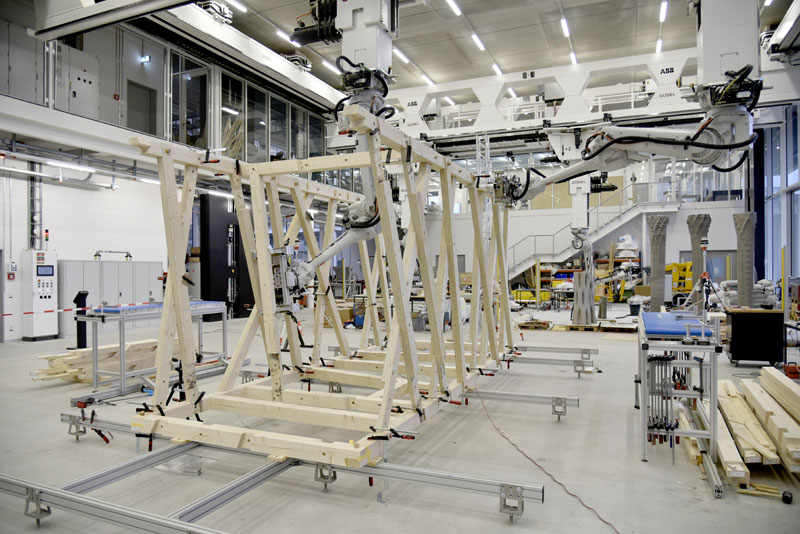Assembly and Disassembly of Structures
Think Earth Subproject 7 creates innovative strategies in timber construction to enhance the reuse of wooden components through advanced connections and digital tools. Physical joints are tested for disassembly and reuse, while digital tools such as augmented reality (AR) and digital twins streamline planning. The project aims for efficient assembly, disassembly, and repurposing, offering economic opportunities for industry partners.

Connections are key elements in the design and construction of load-bearing timber structures. They often determine the dimensions of elements and play a major role in deformation behavior. The aim of this subproject is to develop new strategies for timber construction that enable more efficient reuse of timber components. This subproject addresses this challenge in two ways.
Firstly, physical models of connections need to be developed and tested in order to evaluate the assembly and disassembly processes. The main aspects of this physical development will focus on the following issues:
- the suitability of currently used connection systems for disassembly and reuse and, where appropriate, the development of new connection systems
- the reliability of the behavior of timber components and connections after assembly-disassembly cycles
Key factors are related to design concepts and tools that enable efficient, and possibly partially automated assembly and disassembly, as well as reliable methods for evaluating the relevant properties after disassembly. Many current fastening systems already allow for significant disassembly, but are not explicitly designed or optimized for part reuse. New developments require the production and testing of many prototype connections and elements. To address the above challenges, the economic partners include manufacturers of fasteners and fastening systems.
Secondly, design and planning tools will be developed to facilitate the design and planning processes for timber construction. These will mainly focus on two requirements:
- the design requirements for the disassembly and reuse of timber construction connections
- Design tools to plan and document the assembly process and to support the disassembly process.
These tools should include features that help address the challenge of reusing existing building elements. Such tools should also be able to integrate with industry-standard software to enable easy implementation by commercial partners. Other digital technologies to be explored include AR and the spatial tracking of construction processes to create accurate digital twins of built structures, and robust digital models that enable interoperability and preserve data over time. A Swiss startup focusing on AR for timber prefabrication will help develop these technologies.
Planners and timber construction companies are involved as commercial partners to test the integration of physical and digital systems. For these partners, the ability to ensure the reusability of their timber parts, components, modules and connections offers a significant economic advantage. This should not diminish the market for their new products and may even lead to business relationships that include the deconstruction phase, in which they have not usually been involved to date.
Contact person
Dr. Oliver Bucklin
ETH Zurich – D-ARCH Architecture and Digital Fabrication
Email:
Website